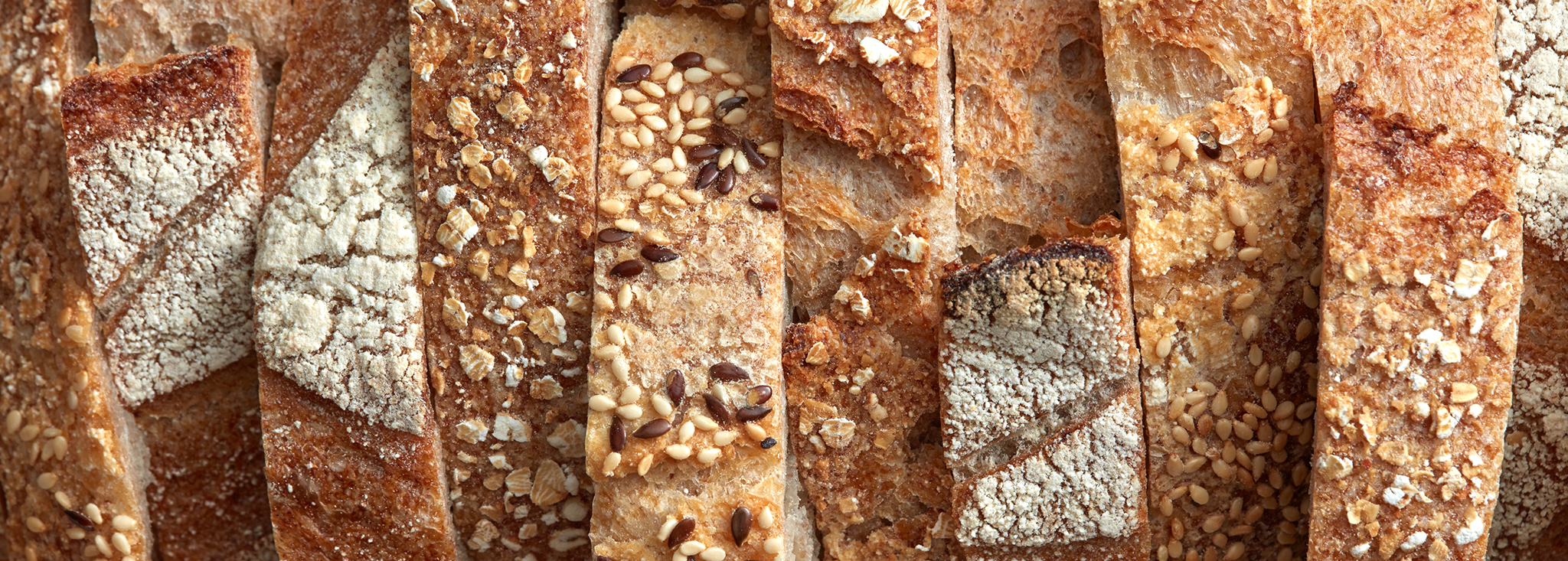Gluten-Free Diet Rundown
According to the Celiac Disease Foundation, gluten is a general name for the proteins found in wheat. Gluten helps foods maintain their shape, acting as a glue that holds food together. Gluten can be found in many types of foods, even ones that would not be expected. Those with a gluten allergy often opt for a gluten-free diet.
A gluten-free diet is recommended for people who live with celiac disease or an allergy to wheat. Foods that contain gluten include anything with wheat, rye, barley and triticale (a cross between wheat and rye). Common foods that you might come into contact with that contain gluten are:
- Bread, baked goods, sauces, dressings, soups, pasta, cereals
- Malt, food coloring, soups, beer, Brewer’s Yeast
- Rye bread, beer
- Oats that are not designated gluten-free + might have been grown alongside wheat, barley or rye
People with diabetes might be attracted to the idea of a gluten-free diet because a lot of high-carb foods also have high-gluten content and people with diabetes have a tendency to favor low-carb alternatives. Some people adopt the diet because they believe it is inherently better for them, though there is little scientific evidence that suggests the occurrence of specific health benefits as a result of going gluten-free. Still, some people feel this might be true, considering the fact that wheat is grown differently today than it ever has been before.
Common Gluten-Free Foods
Foods that are naturally gluten-free include:
- Fruits and vegetables
- Non-processed beans, seeds, nuts
- Non-processed lean meats, fish and poultry
- Eggs
- Most low-fat dairy products
Grains, starches and flours are suitable gluten-free alternatives include:
- Amaranth, arrowroot, buckwheat, flax
- Corn and cornmeal
- Rice, soy, corn, potato and bean flours
- Millet, quinoa, rice
- Soy, tapioca, teff
Misconceptions of the Gluten-Free Diet
Many people only associate gluten with wheat and completely leave barley, rye, and triticale especially, out of the equation. It’s easy to overlook these other significant sources of gluten and opt for things that are just wheat-free, when wheat-free does not always indicate gluten-free and this is a common misconception.
Wheat is also used often as a mixing or thickening agent meaning lots of sauces, dressings, and mixes contain gluten as well. This is why checking food labels is crucial for people who need to adopt a gluten-free diet. There are foods and products out there that we’d never suspect would have gluten but do, like soy sauce, gravy, certain supplements, fried foods and hot dogs to name a few.
Is It Good for Diabetes?
For the cross-section of the population who live with both celiac and diabetes, a gluten-free diet might be helpful. That said, a popular study done by a group from Harvard found that higher risks of type 2 diabetes were found in people who had less gluten in their diets. There were a number of factors involved, among them that those who had less gluten also had less fiber in their diets as a result, which is a “known protective factor” in preventing type 2 diabetes (T2D). The study also observed that micronutrients are typically lacking in many gluten-free foods as opposed to those with gluten, leading to poorer health overall.
Studies like this prove interesting, though not necessarily conclusive. The general consensus is that for people who already have diabetes, adopting a gluten-free diet just to do so will prove difficult to follow because people with diabetes already have to be incredibly mindful of what they eat. Having to moderate and make a point to cut out foods on both fronts might be more trouble than it’s worth for some.
What’s most important is to not adopt diets or health fads without properly researching and getting input from a physician or certified diabetes educator. Your health team will be the best at determining what path you should take to ensure you are the most healthy.





